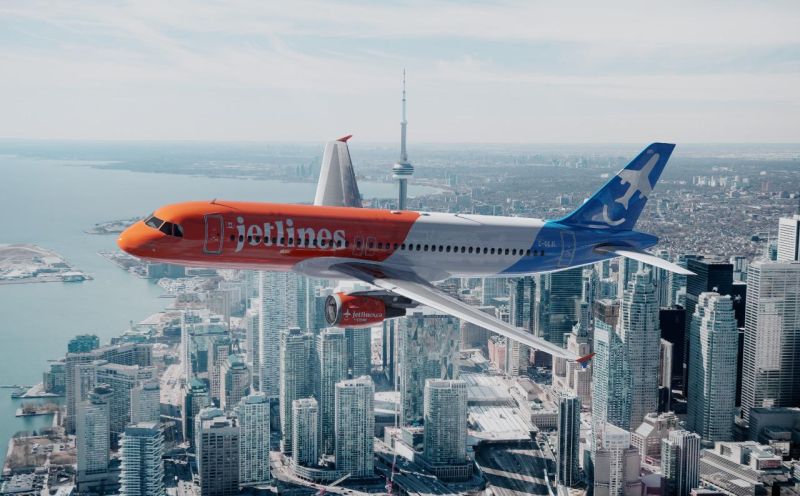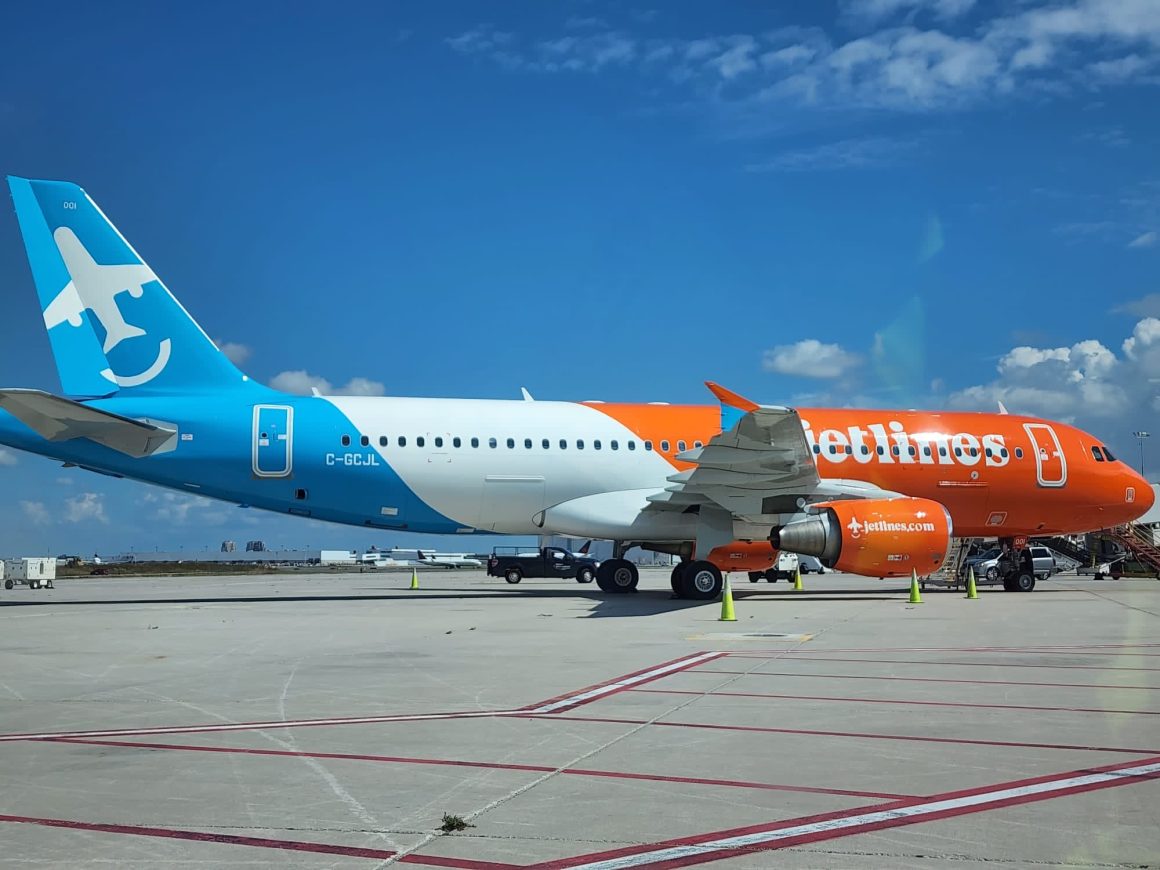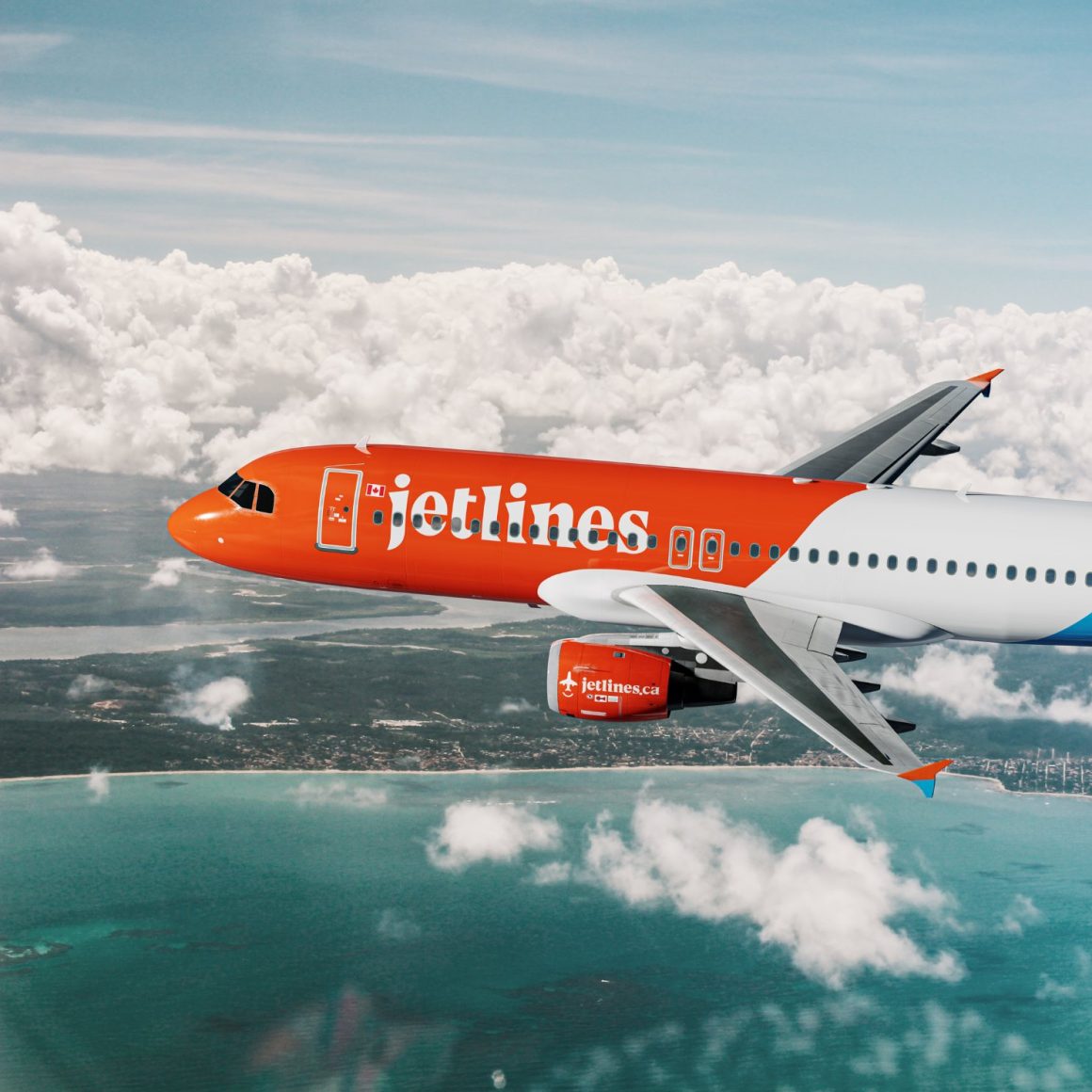On Wednesday, Canadian discount airline Canada Jetlines ceased operations less than two years after its first flight.
The sudden collapse occurred just days after a significant leadership shakeup, including the resignation of CEO Brigitte Goersch. The Mississauga, Ontario-based airline had recently announced the need to raise additional capital to continue its operations, but these efforts proved unsuccessful.
According to a press release from the airline, its ability to continue depended on securing “adequate financing and to grow the airline to the point where it can commence profitable operations.”
Despite exploring various financing options, including strategic transactions, debt, and equity financings, the airline failed to obtain the necessary funds to stay afloat.
Canada Jetlines Joins a Growing List of Defunct Canadian Carriers

Jetlines, which mainly served warm-weather destinations in the U.S., Caribbean, and Mexico, called the move temporary and indicated plans to file for creditor protection.
Jetlines’ short lifespan highlights the difficulties faced by low-cost carriers in Canada. The airline is the third Canadian carrier to cease operations within the last year, following Lynx Air and Swoop’s closures in February 2024 and October 2023, respectively. Additionally, Jetlines is the 11th Canadian low-cost airline to launch and subsequently shut down since 2000.
In an interview with CBC News in February 2024, former CEO Eddy Doyle pointed to high taxes and competition from major carriers like Air Canada and WestJet as significant challenges for discount airlines in Canada.
Additionally, the country’s vast geography and lower population density compared to the U.S. make it difficult for airlines to sustain profitable operations over long distances.
Jetlines Operated Four Airbus A320 Aircraft

After a ten-year struggle to get off the ground, Canada Jetlines’ first flight took place on 22 September 2022.
The carrier operated a fleet of four all-economy Airbus A320-200 aircraft and initially planned to expand to 15 aircraft by the end of 2025. However, financial difficulties and the inability to secure sufficient capital forced the airline to scale back its ambitions.
In January 2023, the airline ended its intra-Canadian flights to focus on warm-weather destinations and aircraft leasing during the summer months. Even as recently as May 2024, Jetlines officials said they planned on operating seven aircraft by the end of the year.
According to its website, Jetlines served a total of ten destinations at the time of shutdown, including:
- Cancun, Mexico (CUN)
- Fort de France, Martinique (FDF)
- Fort Lauderdale, FL (FLL)
- Miami, FL (MIA)
- Montego Bay, Jamaica (MBJ)
- Orlando, FL (MCO)
- Puerto Plata, Dominican Republic (POP)
- St. Petersburg–Clearwater, FL (PIE)
- Toronto, Ontario (YYZ)
- Tulum, Mexico (TQO)
Jetlines also operated a robust charter network.
The Company was ‘Scrambling’ to Survive

Canadian Aviation expert John Gradek noted that Jetlines was barely hanging on toward the end.
“They were just going month-to-month, trying to scramble and get as much cash as they possibly could to meet the payroll and the lease cost on the airplanes,” Gradek told CBC News.
The airline’s collapse leaves a gap in what was becoming an increasingly saturated Canadian airline market. While airlines like Jetlines, Lynx, and Swoop all provided needed competition, the reality is that there are only so many people to fill the seats.
With three fewer carriers, Air Canada, WestJet, and Air Transat are now the dominant players. Other Canadian carriers include Porter Airlines, Flair Airlines, and Sunwing. Multiple regional and cargo carriers are also based across the enormously vast country.
What’s Next After Jetlines?

Jetlines’ demise also underscores the ongoing challenges facing the Canadian aviation industry. Despite the promise of low-cost travel, the market conditions in Canada have proven to be a formidable barrier, leading to the downfall of yet another aspiring carrier.
Will Jetlines be the final contender in the quest to capture the hearts of budget-minded Canadian travelers? It’s doubtful. But it’s tough to see any new low-cost carrier enter the market with any measure of success as long as the dominant players continue to rule the skies of the Great White North.
